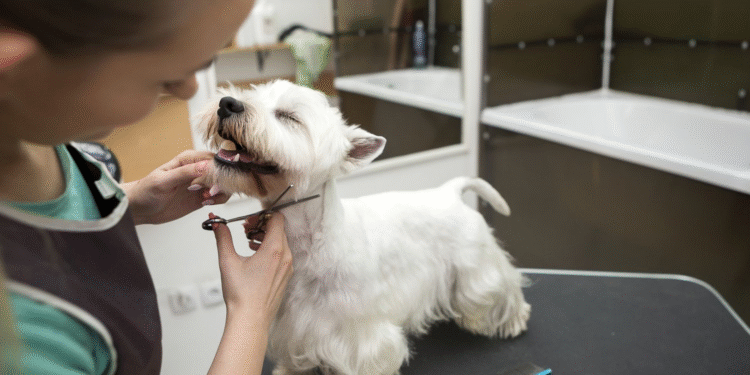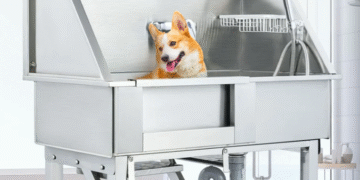In the burgeoning industry of pet grooming, professionals dedicate themselves to maintaining the health and aesthetics of our beloved canine companions. As rewarding as this profession can be, it is not without its challenges. One significant aspect that every dog groomer must navigate is the potential for claims and complaints from pet owners. Understanding these claims helps groomers mitigate risks and maintain trust with their clientele.
Understanding the Role of a Dog Groomer
Dog groomers are responsible for much more than just making pets look appealing. They play a crucial role in ensuring the overall health and well-being of dogs by providing essential services like bathing, trimming nails, cleaning ears, and more. Given their close interaction with animals, groomers must possess both technical skills and a profound understanding of animal behavior to ensure a safe environment.
Claim 1: Injury to Pets During Grooming
Common Types of Injuries
One of the most prevalent claims against dog groomers involves injuries sustained by pets during grooming sessions. These can range from minor cuts and bruises to more serious injuries such as broken bones or burns caused by hot equipment.
– **Cuts and Scratches**: Often result from sharp tools like scissors or clippers.
– **Burns**: Can occur when dryers or clippers overheat.
– **Fractures**: May happen if a pet is mishandled or falls from a grooming table.
Case Study: A Mishap with Clippers
Consider a scenario where a groomer, in a rush to meet multiple appointments, inadvertently used clippers that were not adjusted properly for the dog’s coat type, resulting in nicks and cuts on the pet’s skin. The owner noticed the injuries upon picking up their pet and filed a complaint against the grooming salon.
Claim 2: Skin Irritations and Allergic Reactions
Identifying Allergic Reactions
Skin irritations and allergic reactions are common concerns raised by pet owners post-grooming. These issues may arise due to shampoos, conditioners, or other grooming products used during sessions.
– **Symptoms**: Redness, swelling, itching, or hives on the skin.
– **Common Allergens**: Ingredients in shampoos such as fragrances or preservatives.
Preventative Measures
To prevent such claims:
– Use hypoallergenic products specifically designed for sensitive skins.
– Conduct patch tests on pets before applying new products broadly.
– Maintain detailed records of any known allergies provided by pet owners.
Claim 3: Negligence and Breach of Duty
What Constitutes Negligence?
Negligence claims arise when a pet owner believes that their groomer failed to act with reasonable care, leading to harm or injury to their pet. Examples include leaving pets unattended on high tables or failing to secure them properly.
Legal Implications for Groomers
Groomers found negligent may face legal actions that can result in fines or loss of licensure. It’s imperative for grooming professionals to understand local regulations and adhere strictly to safety protocols.
The Importance of Communication with Clients
Effective communication with clients plays a vital role in reducing misunderstandings that could lead to claims. Groomers should:
– Clearly explain procedures and potential risks before initiating grooming.
– Provide aftercare instructions tailored to each pet’s specific needs.
– Encourage open dialogue where clients feel comfortable discussing concerns.
Implementing Safety Protocols in Grooming Salons
Safety protocols are essential in minimizing risk during grooming sessions:
– Regularly inspect equipment for wear and tear.
– Ensure all staff members are trained in handling various breeds safely.
– Establish emergency procedures for handling accidents swiftly.
Training and Certification for Professional Groomers
Professional development through training programs helps groomers refine their skills and stay informed about industry standards:
– Pursue certifications from recognized bodies such as the National Dog Groomers Association of America (NDGAA).
– Attend workshops focusing on safety techniques and advanced grooming methods.
The Role of Pet Business Insurance in Risk Management
PBI offer comprehensive insurance for dog grooming businesses and is an invaluable asset for managing potential liabilities associated with grooming services. It covers legal fees, medical expenses for injured pets, and compensation claims filed by dissatisfied clients. By investing in comprehensive insurance policies, groomers protect both their business interests and professional reputation.
Conclusion
Navigating the common claims against dog groomers requires a proactive approach centered on safety, communication, and continuous education. By understanding these challenges and implementing robust strategies, groomers can enhance their service delivery while minimizing potential risks. Ultimately, maintaining transparency with clients and prioritizing animal welfare will foster trust and promote long-term success in this flourishing industry.










